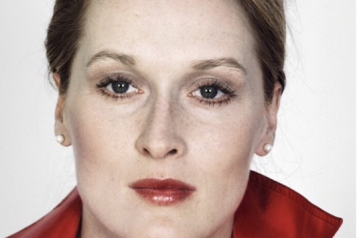It’s being hailed as the new lipo, but what exactly is mesotherapy? Body image is a top concern among women in the U.K. is rife, with only 3% of the population happy in their own skin. In commissioned surveys it was found that 73% of women think about their body shape every single day; and 91% of women are unhappy about their hips and thighs. Despite shapes and sizes (which can include those who are slim), cellulite affects 95% of British women of all ages. Hence, the U.K. beauty industry sees millions of pounds being spent on products; these include creams, gels, and tools to get rid of stubborn fat deposits that cannot be broken down with exercise or diets. The extension of cellulite is that it makes many women feel incredibly self-conscious, especially during summer months when clothing only gets skimpier.
Many who have tried and tested beauty products designed for cellulite will know that they have minimal, if any effects. Therefore, the cosmetic procedure industry is now seeing a surge of patients turning to non-evasive cosmetic procedures, such as mesotherapy, for both face and body. Mesotherapy is a cosmetic procedure that was first developed in the 1950s in France, to improve blood circulation and treat sport traumas, rheumatism, and vascular diseases. It is now widely used in the cosmetic realm to treat skin conditions such as acne, rosacea, wrinkles and fine lines, and localised fat and cellulite in the body. The procedure involves injecting a cocktail or mixtures of vitamins, homeopathic ingredients, and amino acids, to boost areas of the face or body. In the case of cellulite, the fat is broken down-causing them to break away from connective tissue.
Dr. Zafar S. Khan, of Harley Street Treatments and The Face Lift Clinic in London, explains his exclusive ‘mesotherapy’ treatments for face, known as ‘mesohyal’, and for the body, known as ‘mesolipolysis’.
Q: What is ‘Mesolipolysis’?
A: Mesolipolysis, is a non-invasive procedure, that requires multiple fine injections of active ingredients into the treatment area beneath the skin to melt and remove small stubborn, unwanted pockets of fat- that are resistant to diet and exercise. The fat dissolves and is carried through the bloodstream and excreted by kidneys and bowel. Therefore, very little, if any medicine reaches the general circulation and in any cases the level is so low that it has no effect on the rest of the body. Unlike surgery, these treatments are usually relatively simple, require no post-operative recovery time, require no heavy bandages, and no anaesthesia. Numbing cream may be applied if necessary.
Q: What parts can be treated?
A: Double chins, cheeks, neck, inner and outer thighs, buttocks, arms, lower and upper parts of the abdomen, fat deposits on shoulders, arms, joins, and back may be treated with mesolipolysis. A doctor injects the active substance using a thin needle directly into the fat deposit. There is a gradual and natural degradation of fat. After the procedure you should take approximately 15-30 minutes to relax and to drink 1-2 litres of water a day. In the first hours and days you may feel itching, and also swelling and redness of the treated area.
Q: Are there any side effects to this treatment, and do the results keep?
A: To achieve the maximum effect of the Mesolipolysis, we recommend to implement changes in your diet and lifestyle alongside your first treatment. Many patients see a result after the first or second treatment, although for optimal results extra treatments may be required. The treatment is painless and requires no anaesthesia. Mesolipolysis can be a little uncomfortable, but not painful. It is best to avoid contact with the sun directly after the treatment as this may produce pigmentation. It is recommended to keep the treated area cool for 24 hour. There may be minor bruising, sensitivity to touch, pain at the injection site and higher fever in the treated area. These symptoms usually subside quickly, and should completely disappear within three days. However, if you feel unwell or your condition worsens in any way after this time, you should contact your doctor.
Q: What is mesohyal?
A: Mesohyal is a non surgical procedure targeting the underlying factors that cause aging, while also treating the skin at the surface, restoring its natural youthful look and elasticity. As we age the skin starts losing its nutrients and becomes saggy with the appearance of fine lines and wrinkles.The treatment includes and utilises 58 of the most effective ingredients ( Vitamins, Amino Acids, Minerals, Cytokines, Coenzymes ,Peptides) and Natural moisture factor( Hyaluronic acid) or HA for skin rejuvenation. Hyaluronic acid or HA, is found naturally in almost every cell in the body with the greatest concentrations in the skin tissue. It is found in the deep dermal layers as well as the top epidermal layer of the skin and forms the smooth and elastic properties of young skin. HA can bind up to 1000 times its weight in water, which is why it is often referred to as the body’s internal moisturizer. With age, the skin’s ability to produce HA decreases, and hyaluronic acids are safe, natural and tissue friendly.
Q: What are the results of mesohyal?
A: Mesohyal does not replace a Face-Lift. It improves skin tone and texture and many
patients report feeling the skin tighter and lifted along with a rejuvenation and natural glow. Those who are looking for a boost that goes beyond a manual facial with longer lasting effects should look into a treatment such as mesohyal. Many patients come for this treatment to also improve the texture of their skin while some find that it also helps with dark eye circles too.
About Dr. Zafar S. Khan:
Formerly an ENT (Ear Nose & Throat) specialist and surgeon for over 20 years, Dr. Zafar S. Khan has trained and worked in the UK, Austria, and Japan. He has been in non-surgical cosmetic treatments for 15 years +on Harley Street and offers his patients his expertise and full service care. He performs a full health assessment, including medical history, diet, lifestyle, psychological and social background so he understands how to help his patients better and implement both reparative and preventative programs to turns back the signs of ageing.




















